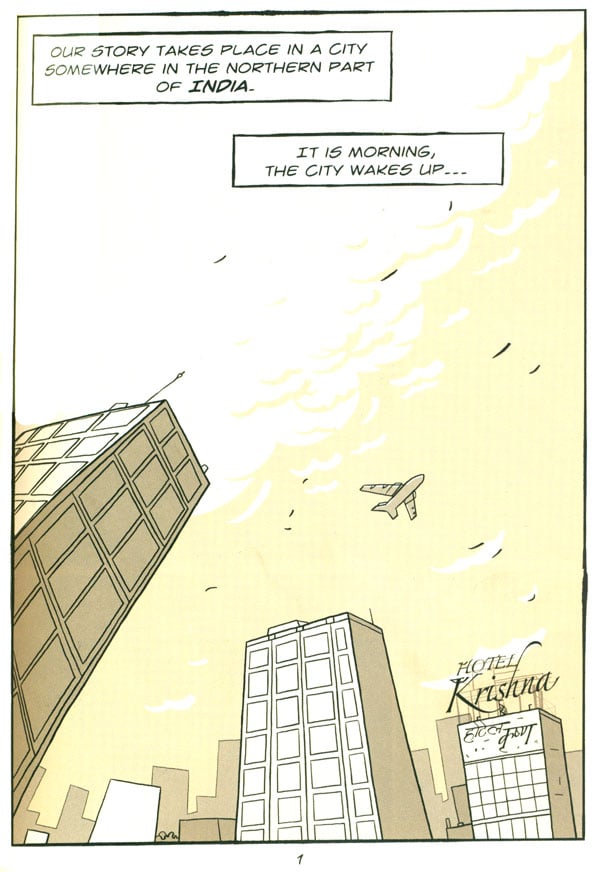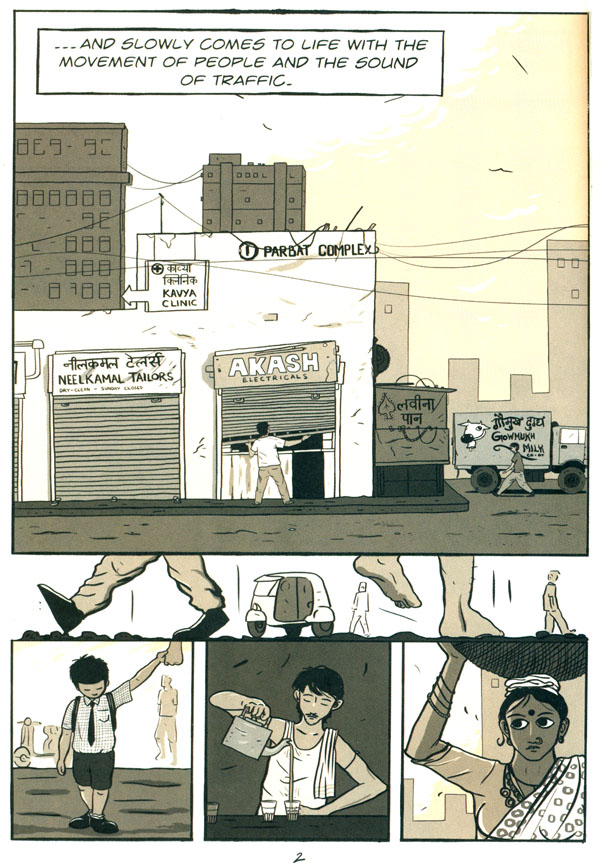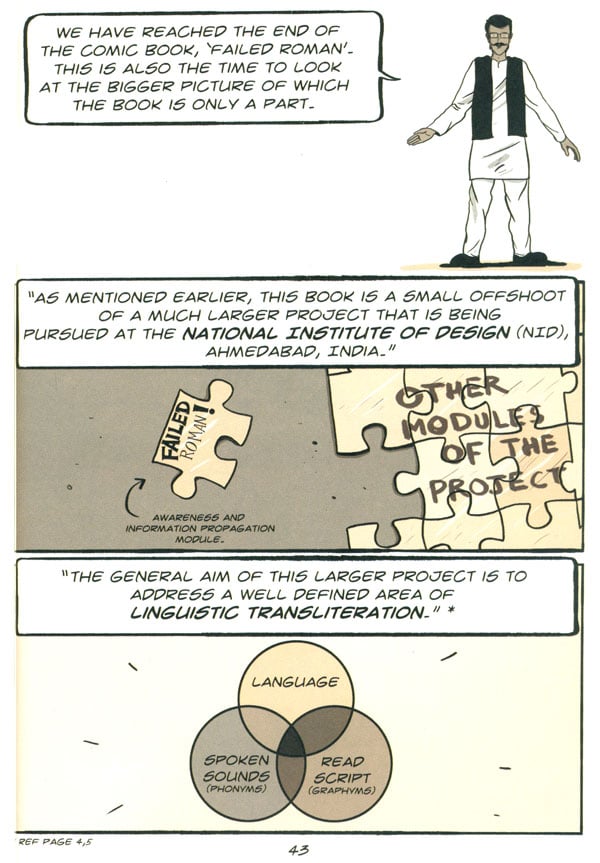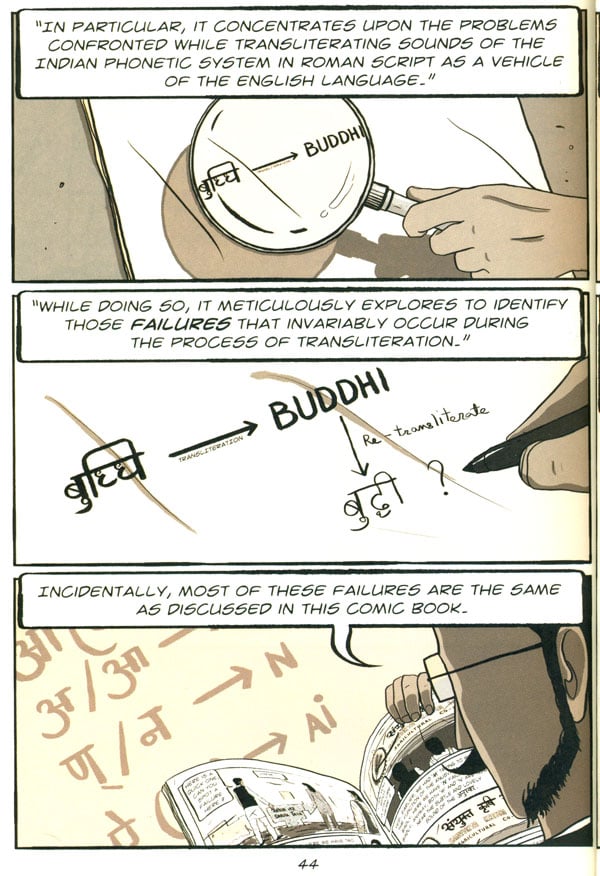
Failed Roman (How Roman Script Fails to Reproduce Important Indian Sounds and Need to be Redesigned)
Book Specification
| Item Code: | NAG586 |
| Author: | H Kumar Vyas and Dhruva Rao |
| Publisher: | National Institute of Design, Ahmedabad |
| Language: | English |
| Edition: | 2013 |
| ISBN: | 9788186199787 |
| Pages: | 56 (Throughout B/W Illustrations) |
| Cover: | Paperback |
| Other Details | 8.5 inch X 5.5 inch |
| Weight | 120 gm |
Book Description
Introduction
Is English an Indian Language?
This comic book should be read in the spirit of a message. It is a message addressed to those of you who, along with your own language, also use English as medium of communication; both in speech and in writing. As such, English becomes an integral part of your daily work routine. You use it with almost the same facility as your own language, whether in school or college, at your work place, when communicating among friends or sometimes even with the members of your family.
English is no more treated as foreign language in India. Many people think that this is because it has been a historical legacy from India's past foreign rulers. This may be partly true. But the real, and far more important, reason is that today it has become the most popular linguistic medium of international communication. Because of this, English has been accepted as an integral part of India's educational system. And learning English besides one's mother tongue has now become an accepted norm for school going children.
Inexcusable Failures
And yet most of us who speak and write English are unaware of inexcusable failures that occur when important sounds from the Indian phonetic system are transliterated in Roman script. That is, the script in which English is written.
But before we discuss these failures, a word about transliteration. We all know what translation is. It is the process by which we relate two languages semantically to each other. On the other hand, there is a process that phonetically relates, or transfers, the sound system of one script to that of the other. And that is called transliteration. To put it simply, what happens in transliteration is the transformation of sounds of words from one script into those of the other. CA very simple example: Translation of in English would be 'a girl', but its transliteration in Roman script would be, 'b a l a'.) Why do these failures occur? It is mainly because in the English phonetic system there is no provision for faithfully reproducing several distinct sounds that are typical of the Indian phonetic system. When any of these sounds is found missing, the accepted practice is to bring in a 'quick fix' substitute. This substitute is the nearest existing sound from the English phonetic system. Unfortunately, it never works. Every one of these efforts results in either a frustrating ambiguity or still worse, an unfortunate misunderstanding leading to loss of original meaning. In any other country this kind of neglect would have been considered intolerable and an insult to the indigenous language or languages.
Object of the Comic Book and the NID Project
So the object of both the print and online versions of this comic book is to serve as an' effort toward creating a general awareness to this problem. The immediate aim is to make people aware of typical failures that occur in transliteration and encourage them to think of possible remedies. This is exactly what the characters in the comic book are seen doing with help of leading questions. The book has been designed keeping in mind those people who as a rule speak, read and write more than one language; English being one of them.
In fact this very effort is an integral part of a larger and thoroughly comprehensive project that is being perused at the moment at the National Institute of Design (NID) in Ahmedabad, India. The project systematically addresses the failures discussed in this comic book in the spirit of a design problem. The efforts are on to work out appropriate solutions. As this is the first phase of the project, the target groups have been identified for their close acquaintance with two writing systems or scripts: Devanagari and Roman. In next phases to follow, one expects similar exercises for other major scripts of India.
Indianise the Roman Script!
A final word of caution. There is a remote possibility that some people might misinterpret this exercise and the special design project at NID as an effort to Romanise Indian scripts. We make this point because there have been misguided efforts of this nature in the past especially during the time of the British. If at all, our present effort goes on to prove that what is needed is exactly the opposite which is, to Indianise the Roman script. A redesigned Roman script that should allow English to assimilate those 'missing' sounds which are essentially Indian and thus move one step nearer to the phonetic systems of Indian languages.









